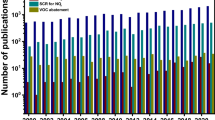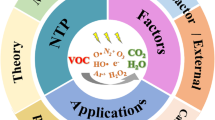Abstract
In view of loss prevention and hazard control, traditional engineers use adsorbents to adsorb volatile organic compounds (VOCs) in the semiconductor, photonics, and petrochemical industries. To save funds and promote green energy application, industries usually apply a zeolite processing desorption step under high temperature in the zeolite rotor-wheel system. Many thermal runaway accidents and flame incidents have occurred in the desorption step. Zeolite has been used to adsorb VOCs and applied in the processing desorption step in a reactor without considering oxygen concentration situation, which could easily lead to a flame followed by thermal explosion. Nitrogen is a critically important purge gas regarding passive action for avoiding an accident. Home-made zeolite was investigated for the best manufacturing ratio, which was 20. Brunauer–Emmett–Teller of zeolite (Si/Al = 20) was analyzed to be 400 m2 g−1, which is easy for adsorbing pollutants. According to our previous studies, home-made zeolite has prominent adsorption capacities on VOCs. Zeolite rotor-wheel system was developed to desorb the pollutants of interest. Zeolite was applied to analyze the thermal stability, runaway reaction under various oxygen concentrations, reuse rates, etc. Zeolite is a thermally stable material under room temperature to 650 °C. An endothermic reaction (30–100 °C) of home-made zeolite was analyzed by differential scanning calorimetry and thermogravimetric analyzer. Clearly, water has a significant effect on deteriorating for the zeolite adsorption. Home-made zeolite is a suitable adsorbent and catalyst in the petrochemical and environmental industries. As far as pollution control and loss prevention are concerned, versatility in the analysis of recycled adsorbents is required and is useful for various industrial applications.











Similar content being viewed by others
References
Chen CL, Fang HY, Shu CM. Source location and characterization of volatile organic compound emissions at a petrochemical plant in Kaohsiung, Taiwan. J Air Waste Manage Assoc. 2005;55:1487–97.
Chen CL, Shu CM, Fang HY. Location and characterization of VOC emission at a petrochemical plant in Taiwan. Environ Forensics. 2006;7:1–9.
Chen CL, Fang HY, Shu CM. Mapping and profile of emission sources for airborne volatile organic compounds from process regions at a petrochemical plant in Kaohsiung, Taiwan. J Air Waste Manage Assoc. 2006;56:824–33.
Salden A, Eigenberger G. Multifunctional adsorber/reactor concept for waste-air purification. Chem Eng Sci. 2001;56:1605–11.
Breck DW. Zeolite molecular sieves—structure, chemistry and use. New York: Wiley; 1974.
Dyer A. An introduction to zeolite molecular sieves. New York: Wiley; 1988.
Yuranov I, Renken A, Kiwi-Minsker L. Zeolite/sintered metal fibers composites as effective structured catalysts. Appl Catal A. 2005;281:55–60.
Meininghaus CKW, Prins R. Sorption of volatile organic compounds on hydrophobic zeolites. Micropor Mesopor Mater. 2000;35–36:349–65.
Ichiura H, Nozaki M, Kitaoka T, Tanaka H. Influence of uniformity of zeolite sheets prepared using a papermaking technique on VOC adsorptivity. Adv Environ Res. 2003;7:975–9.
Su CH, Wu SH, Shen SJ, Shiue GY, Wang YW, Shu CM. Thermal characteristics and regeneration analyses of adsorbents by differential scanning calorimetry and scanning electron microscope. J Therm Anal Calorim. 2009;96:765–89.
Wu SH, Hsieh CC, Chiang CC, Horng JJ, Pan WP, Shu CM. Thermal analyses of home-made zeolite by DSC and TG. J Therm Anal Calorim. 2012. doi:10.1007/s10973-011-1825-x.
Wu SH, Chi JH, Cao Y, Pan WP, Shu CM. Thermal analysis and degradation phenomenon identification of ash-based zeolite. Res J Chem Environ. 2011;15(2):1–5.
Wang YS, Shen JH, Lin JP, Horng JJ. The TG and zeta-potential characterization of silver-zeolite composites for anti-bacterial capability. J Therm Anal Calorim. 2012. doi:10.1007/s10973-012-2493-1.
Wu SH. Thermal hazard investigation of cumene hydroperoxide in the first oxidation tower. J Therm Anal Calorim. 2012. doi:10.1007/s10973-011-1821-1.
Author information
Authors and Affiliations
Corresponding author
Rights and permissions
About this article
Cite this article
Wu, JY., Lee, JC., Wu, YT. et al. Thermal analyses of four adsorption materials for environmental pollution by DSC and TG. J Therm Anal Calorim 112, 665–670 (2013). https://doi.org/10.1007/s10973-012-2597-7
Received:
Accepted:
Published:
Issue Date:
DOI: https://doi.org/10.1007/s10973-012-2597-7




